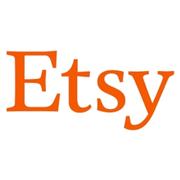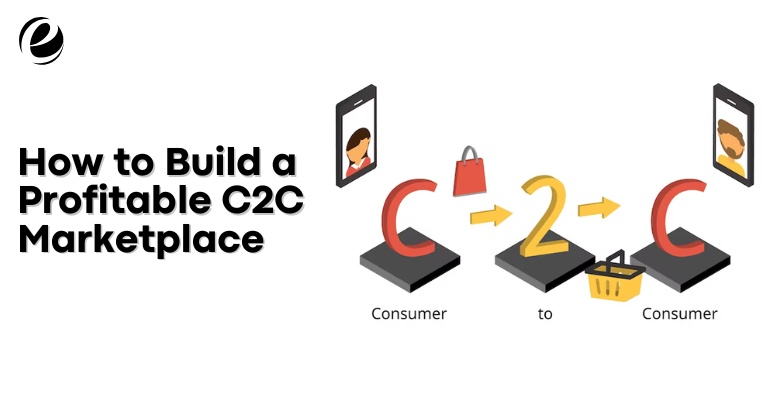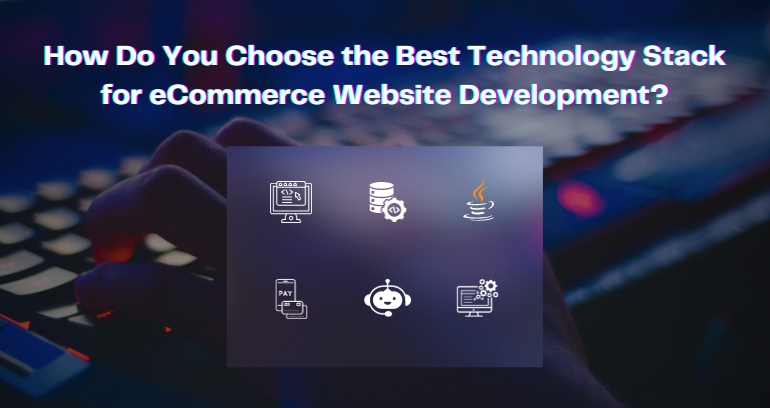In today’s digital era, e-commerce marketplaces are becoming increasingly popular. It is also expected that by the year 2040, around 95% of purchases will be made by e-commerce. However, due to this, the growth of the C2C e-commerce industry has also experienced significant growth in recent years. And establishing a C2C (consumer-to-consumer) e-commerce marketplace can be a lucrative way to generate revenue.
Thus, on the other hand, creating a profitable C2C marketplace is not as simple as it may appear. There are numerous factors that one has to consider while developing, such as design, appropriate platform, and developing market strategy. Don’t worry we’ll walk you through every step of creating a profitable C2C e-commerce marketplace.
Understanding Consumer-to-Consumer Marketplace
A C2C e-commerce marketplace is a platform where individual users can directly buy and sell products or services with one another. Or in other words, it is a digital trading platform that serves intermediary between buyers and sellers, but the inventory is not owned or controlled by them.
Difference Between Various Marketplaces
| C2C | B2C | B2B |
|---|---|---|
| Can purchase from one customer to another customer with the help of third-party business | It is a direct service between the business and consumers | It is the business-to-business type of marketplace |
| Present own UVP (unique value proposition) | Provide the brands | Trade to large players |
| A community of consumers is build | Make conditions for competition | Be the first in your own domain |
How Does the Customer-to-Customer Model Work?
The working of a C2C (Consumer-to-Consumer) marketplace involve several key steps. Here’s a general overview of how a C2C marketplace typically operates:
- Platform Setup: Develop and launch the marketplace platform.
- User Registration: Users create accounts with personal information.
- Listing Creation: Sellers create listings with details and images.
- Search and Discovery: Buyers search and browse for items.
- Communication and Negotiation: Buyers interact with sellers.
- Transaction Facilitation: Buyers make secure payments.
- Order Fulfillment: Sellers ship items to buyers.
- Rating and Feedback: Buyers and sellers provide feedback.
- Dispute Resolution: Mechanisms for resolving conflicts.
- Continuous Platform Management: Ongoing maintenance and improvements.
3 Stakeholders in C2C Marketplace
A consumer-to-consumer marketplace includes three stakeholders-
1. Marketplace Owner
By providing a centralized platform with full logistics and printing capabilities to design or art suppliers, marketplace owners can increase their earnings.
2. Designers
Designers and artists can use the platform to make it possible for consumers to use their creations on products. All they need to do is join up for an account on the marketplace, design their own storefronts, and sell their creations once the admin has given the go-ahead.
3. End-Customers
Customers are given a platform to purchase customized goods with distinctive designs.
Start with e-commerce development with Brush Your Ideas. We can assist you in creating a platform that meets your needs by utilizing our practical technical and business skills.
C2C E-commerce Marketplace Example Ruling Market
1. eBay

eBay is a well-known e-commerce C2C platform that allows consumers to sell together consumers online. It is the first online C2C auction site also. eBay gets revenue by charging the sellers for connecting with potential buyers. Buyers can get several payment options like Paypal, bank debit, or credit card, which is also one reason the buyers choose eBay over another site. The site is also used to generate the labels and ship the package using partnered carriers USPS, UPS, or FedEx.
- Market Stats –138 million active users and over 18.3 million sellers
- Revenue –$9.7 billion revenue in 2022
2. Amazon

Amazon has the largest e-commerce marketplace on the web. The payments of buyers can be made by credit card or Paypal, and sellers will receive the payments via Amazon, which one can transfer to the bank account or Paypal. The platform also charges one of the highest fees of any C2C site, and sellers still use it due to Amazon’s extensive reach.
- Market Stats – 300 million active users and 1.9 million selling partners
- Revenue– $24 Billion in the year 2020
3. Craigslist

It is a free marketplace for consumers to connect with other consumers locally. To cover the expenses, they charge some amount for job postings. There primary purpose is to provide a free C2C e-commerce platform.
- Market Stats – 60 million active users in the US itself.
- Revenue– $500.0M – $1.0B till May 2023
4. Etsy

It is an online community that is specifically focused on artists, crafters, and vintage. People can put their unique handmade or original items. It allows help in managing the orders, listing, and customer queries efficiently on the app “Sell on Etsy.”
- Market Stats– 94 million active buyers and 7.3 million sellers
- Revenue– $2.5 billion in 2022, a 10.1% increase year-over-year.
How To Build A Buy and Sell Marketplace App Like Etsy, LetGo

Process of Building an E-commerce Marketplace
The process of the C2C e-commerce marketplace inspires aspiring entrepreneurs, and if you are among one of them, then the process mentioned below is certainly going to help you. Making an app like this needs a deep understanding of the target audience and their needs, as well as a clear vision for the platform’s functionality and design.
Let’s have a look at the process of how we can create a C2C e-commerce marketplace.
1. Select a Category
The first step is to determine the type of marketplace you want to create. There are two options available horizontal and vertical marketplace. A horizontal marketplace offers a wide range of products from various categories, and they fail to dominate a specific market. On the other hand, vertical marketplace focuses on serving a specific category to be targeted audience allowing better product showcasing and market dominance.
2. Build a Trustable Platform
Building trust is vital for a strong customer relationship in a competitive environment. Prioritizing trust helps customers become advocates, boosting brand visibility, attracting more customers, and increasing revenue. A visually appealing website design is crucial for capturing user attention. Elements like layout, typography, images, and consistency should align with the site’s purpose. Simplicity is key, ensuring easy navigation and completion of desired actions. Visual hierarchy, such as the Z-Pattern design, guides users effectively by placing important elements first. This design pattern incorporates branding, call-to-action, structure, and hierarchy. You can also go for custom development or can go for platforms Magento now as Adobe Commerce, Shopify, Shopware, woo-commerce, bigcommerce, and many more.
3. Pick Features that Are Win-Win
Incorporating robust e-commerce features is crucial for creating a powerful C2C marketplace that fulfills the needs of admin, buyers, and sellers.
| Buyer-Sellers Features | |
|---|---|
| Search & Filters | Provide your customers with filtering options that allow them to be more specific about their preferences and hide products that are not their priority. This helps the search process make it more efficient and helps to improve their overall experience on your C2C marketplace. |
| Promoted Listing | Allow sellers to list their products for promotion, increasing the visibility of these products by placing them in top positions with higher chances of purchase. This helps to drive sales and improve the overall success of your C2C marketplace. |
| Social Media Promoting | To increase brand visibility, allow your customers to share their favorite products on social media channels directly from the C2C marketplace platform. This will also help in increasing the traffic on your platform. |
| Communication Process | Implement a good communication channel for smooth communication between the buyers and sellers, reducing the likelihood of order cancellation and returns. This helps to create a better experience and on-time transaction processes. |
| Account management | You can split the user account into two types sellers and buyers. This lets both the end receive the email, notifications, and messages and apply new settings, etc. This allows them to stay informed and up-to-date with their activities on the platform. |
| Order Management | When the order is placed by the buyers, make use of the push notifications for sending the information in real time through the platform. This allows for an efficient process and fulfills the orders. |
| Ratings and Feedbacks | Build a product rating system that can be modified by buyers. They can share their feedback, positive and negative. Also, include the feature that allows the buyer to report violators of marketplace rules and ass them to the blacklist. |
| Admin Features | |
|---|---|
| Admin Dashboard | Implement an admin dashboard that allows seamless monitoring and management of the entire operations of the C2C marketplace. |
| Content Management | To go with the market trends and demand, the admin should have access to the managing of the data; this allows them to effortlessly manage and change time and align with the changes going on in the market. |
| Product Management | Provide the ability for the admin to oversee and manage the products uploaded by sellers, including the removal of any illegal or prohibited items. This helps to maintain the integrity and compliance of the marketplace. |
| User Management | Put the seller management features to add and remove sellers from the platform, help those who are underperforming, and monitor their performance. This helps in ensuring a successful and thriving marketplace. |
4. Designing a User-Friendly Interface
Designing a User-Friendly Interface Is Necessary when Creating a Profitable C2 C E-Commerce Marketplace. Your Platform Should Be Simple to Use and Navigate. Mobile Friendly Is Also One of The Considerations as More People Are Using Mobile Devices than Others. Along with Usability, the Visual Designs Should Also Be Attractive, Retain the Users, and Establish the Brand’s Identity. A Visually Appealing and User-Friendly Interface Can Help Attract More Users and Drive Profitability.
5. Monetization Model
| Commission Model | One of the popular revenue models for marketplace businesses is commission fees. In this, every transaction by the user is charged. The fees can be taken from the end customers, artists, or both. |
| Subscription Model | Recurring fees that you charge marketplace to access your marketplace. On a regular basis, you can also predict your monthly revenue. This also attracts more users to the platform because they have to pay a relatively smaller amount each month instead of paying a big sum all at once. |
| Listing Fee | In this, the users pay for every offer they post. The major difference between the listing and commission model is that you charge users only when they sell an item in the first model, but here, they pay for posting. Listing fees are small and cheaper than subscriptions. It becomes harder sometimes to earn revenue, and here is a good idea to have a secondary model. |
6. Selecting the Right C2C E-commerce Marketplace Tech stack
A combination of programming languages, software, and tools that helps in developing a project is known as a technology stack. A tech stack plays a vital role in C2C marketplace development. Here are some common technologies that you can use in creating the marketplace. You can also take the help of the tech stack, which is used in similar projects 90% of it will fit with some modifications.
| Programming languages | JavaScript, HTML5, Ruby, CSS3 |
| Application framework | Ruby on Rails |
| JavaScript framework | React.js |
| Automation frameworks | Capybara, RSpec, PhantomJSSQL |
| Data Storage | PostgreSQL |
| Key-Value Storage | Redis |
| Web server | Nginx |
| Web Application Server | Puma |
| Hosting | Amazon Web Services (AWS) |
Other than these, there are many other tech stacks that can be used in the development as per the requirement of the features and additions. You should hire a good team to get the best results in development without worrying about the tech stack to be used.
Top Reasons to Invest in C2C Marketplace
There are several reasons to invest in the C2C marketplace. However, these are some of the top reasons.
1. Expanding Market Reach
One of the most preferred platforms today is e-shopping. Also, the C2C model has gained a lot of popularity with the advent of companies such as Airbnb, Amazon, eBay, and many more. Below given graph you can see the constant growth of retail sales worldwide.

2. Cost Effective
Connecting with the consumers directly on this platform reduces overhead costs associated with inventory management, warehousing, and physical stores. C2C marketplace development eliminates the need for intermediaries and traditional retail structures. This cost-effective part can help the marketplace operators to gain higher profit margins.
3. Scalability
C2C marketplaces have the potential to scale rapidly due to their asset-light nature. As the platform grows, the more the customer, the more profit you can get. The marketplace becomes more valuable with more participants, attracting even more users. This scalability can result in significant returns on investment.
4. Diverse Revenue Streams
The C2C marketplace can generate revenue from various sources. They charge fees or commissions on transactions. Additionally, advertising, premium services, and partnership-related businesses can provide additional revenue streams. This diversity allows for multiple sources of income and can enhance the profitability of the investment.
5. Global Reach
The digital nature of C2C marketplaces enables access to a global customer base. Through online platforms, buyers and sellers can engage in cross-border transactions, expanding market reach and potential. This global scalability presents an opportunity for investment in C2C marketplaces to capitalize on e-commerce and international trade growth.

Market Trends to Get Your Hands On!
Here are some key market trends to look at in 2023 which can shape your marketplace effectively.
1. Speech AI

One of the most used market trends in most industries. The e-commerce is also including SpeechAI in their marketplace. This enhances the search for the required items and also can give the right direction to figure out what are the most in-demand things. It can assist the sellers in having the most demand things in more amount than the others; this will help in the revenue generation.
2. Mobile Dominance

Day by day, the usage of mobile is overcoming the use of other devices like laptops, computers, and many more. So this means the C2C marketplace should focus on optimizing their mobile apps to provide a seamless and efficient user experience.
3. Virtual and Augmented Reality

To make the shopping experience more immersive, some platforms are starting to use virtual and augmented reality. For example, you can see the lipstick swatch before buying by applying swatches on yourself with the help of these technologies. Apart from these, you can also see many things in 3d before buying it.
4. Blockchain Integration

With the aim of enhancing security, transparency, and the fight against counterfeit products, blockchain technology is progressively finding its way into C2C marketplaces. It can offer a trustworthy transaction history, which fosters user confidence.
5. Gamification

Some C2C marketplaces include gamification features in order to make the buying and selling experience more enjoyable and interesting. This can include user competitions and challenges as well as rewards for frequent sellers or buyers.
6. AI Chatbots

Integrating the AI chatbot in the C2C marketplace can be the right choice for solving the query of the customer’s questions instantly. This will also reduce the stress of relying on the customer support team to tackle the situation at odd times. Increase customer satisfaction and faith in the marketplace due to this as they will be clear about each thing.
Cost of Building a C2C Marketplace
The Starting cost of developing a C2C marketplace usually costs approximately $5000; depending on the building approach you choose and the feature you want to include, the price may differ. The complexity of the features and tech stack used will determine how much costs increase or decrease. Also, the price can change based on the number of additional integrations, custom designs, or functionalities used.
How Emizen Tech Can Help in Developing a C2C Marketplace?

By collaborating with Emizen Tech, a leading ecommerce development company, in creating a C2C marketplace, you can get invaluable assistance in several ways. With the team of 200+ experts, specialized in ecommerce development, you will be assisted with the app’s features, functionality, and overall user experience, ensuring it meets the specific needs of the target audience. We stay closely connected with all the new technologies and focus on improving our knowledge, constantly upgrading our team’s skills in ecommerce development. Ultimately, with the help of our experienced team, you can achieve the best final results in developing a perfect C2C marketplace.
Final points to Recall!
Making a C2C marketplace requires careful planning and attention to detail to give the buyers and sellers a seamless and secure experience. By following the best practice and keeping all the required details in mind, the developers can create a dependable and practical marketplace. As the demand for e-commerce marketplaces rises in the upcoming years, the development of C2C apps will become essential.
You should work with an e-commerce app development company with the necessary skills and experience to finish your project if you want your application to be successful and generate the expected ROI.
Still confused about making the decision, don’t worry. You can contact our team 24*7. They can help you resolve all your queries and doubts.





 USA
USA UK
UK